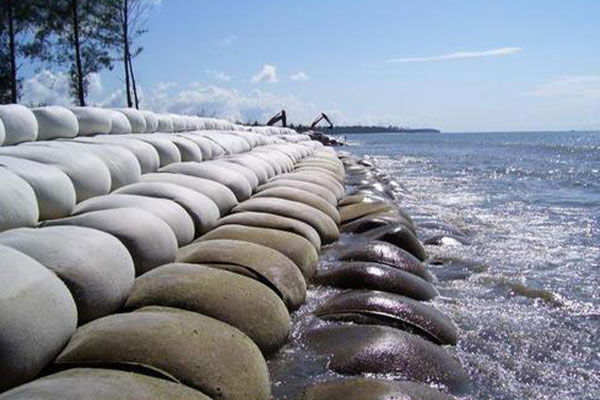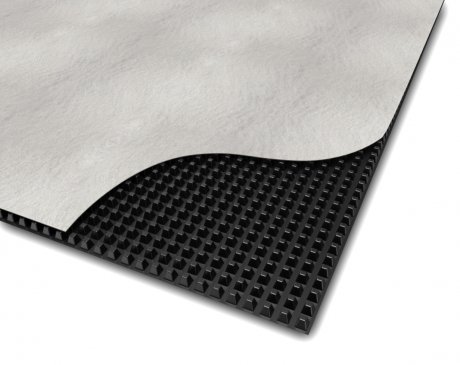Unleashing the Potential of Geocells
In the vast field of civil and environmental engineering, innovation is the driving force behind the creation of solutions that not only address problems but also pave the way for efficient and sustainable construction methods. Among these innovations, geocells have become a versatile and revolutionary technology that is transforming the way we approach numerous engineering projects. Let’s take a look at the realm of geocells, investigating their distinctive structure and their significance for a variety of applications.
What Are Geocells and How Do They Function?
Geocells are cellular confinement systems that are developed as an affordable and durable material for soil stabilisation and protection. These cellular confinement systems successfully maintain the soil’s profile, which results in a stronger structure for the infill and pavement. The geocell comprises a three-dimensional honeycomb design, which makes the geocell strong and durable. This format also allows for improved load distribution. A geocell is made from high-density polyethylene (HDPE), which is utilised to stabilise soil. The stabilising is done by reducing the lateral movement of soil particles while vertically loading the contained infill.
Importance Of Geocells in Civil Engineering Projects
Geocells have become extremely popular due to their versatility in solving a wide range of technical problems, including soil stabilisation, erosion control, road building, and the creation of green infrastructure. Their innovative design improves the mechanical properties of the materials they contain while also promoting sustainable engineering methods by using fewer resources and having a smaller negative environmental impact. Let’s look at some of the main uses for geocells.
- Geocells for soil stabilisation
The stability of the ground on which we construct is crucial in the complex web of civil and environmental engineering. Construction projects can face major obstacles due to soil conditions, which are frequently variable and unpredictable. Geocells have the ability to stabilise projects with weak or unconsolidated soils by enclosing the soil particles within their cellular structure. This confinement boosts the soil’s load-bearing capacity and inhibits lateral movement by providing an ideal solution for foundations, embankments, and retaining walls.
- Geocells in erosion control
Soil erosion is a natural occurrence that is worsened by human activity and threatens the ecosystem and built environments. It results in the loss of rich topsoil, deterioration of water quality, and disruption of fragile ecosystems. Soil erosion causes a negative impact on the ecology and infrastructure. Geocells have the ability to prevent erosion by creating a barrier that stabilises slopes and shorelines. The cells enclose and hold onto soil particles, preventing water currents from washing them away.
Construction projects frequently face the difficulty of unstable slopes. Geocells fortify slopes, reducing the risk of landslides and soil erosion. Geocells help embankments and hillsides remain stable over time by constructing a reinforced framework.
- Geocells in road construction
Geocells are especially important for road construction in places with poor subgrades. They distribute the weight and lessen strains on the subgrade, improving road performance, extending road life, and lowering maintenance expenses.
- Geocells for retaining walls
Geocell-based retaining walls offer a practical and attractive solution for grade adjustments. The cells construct a strong framework that holds soil in place, avoids wall failure, and promotes plant growth.
- Geocells in green infrastructure
By establishing stable surfaces for the growth of vegetation, geocells help to construct green infrastructure. They are crucial to sustainable urban planning because they help the growth of grass, plants, and trees.
- Geocells in landfill construction
Geocells are used in landfill capping systems to improve stability and stop soil erosion. The cells offer a barrier of defence that reduces the possibility of contamination and landfill gas emissions.
- Geocells for agricultural and land management
Geocells in agriculture help in increasing soil structure and water distribution, which results in increased crop yields. They are also used to reduce erosion on building sites and agricultural fields.
Unleash the Power of Wall Tag Geocells
As we navigate the dynamic world of civil and environmental engineering, geocells stand out as a true marvel of contemporary building technology. If you’re looking for creative solutions that successfully blend sustainability and practicality, Wall Tag Geocells are the ideal option. Wall Tag provides geocells with the potential to alter your projects, guaranteeing stability, resilience, and a better future for our built environment. Explore the extensive selection of Wall Tag Geocells to experience the revolutionary potential of geocells and elevate your engineering pursuits. Wall Tag will help you establish better infrastructure as you embrace the adaptability of geocells.




